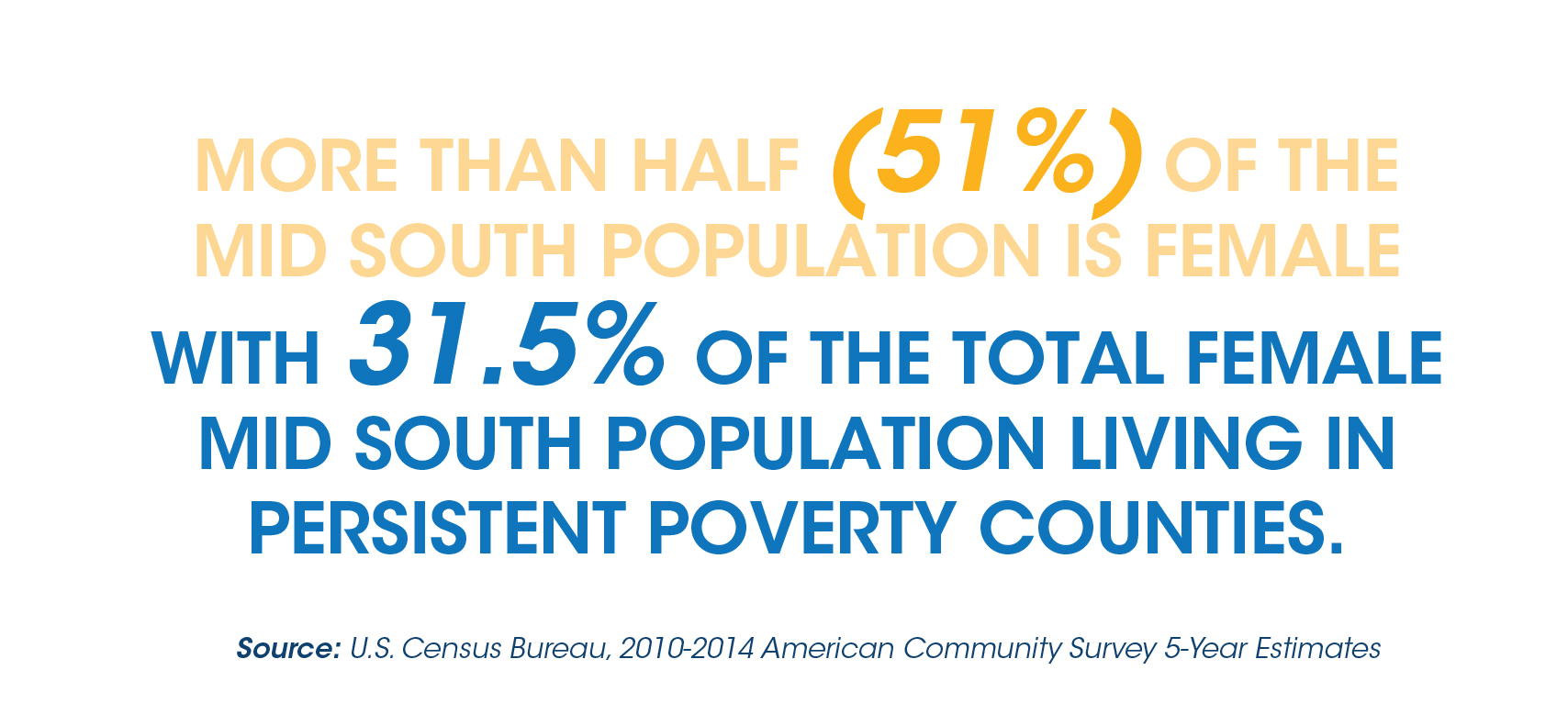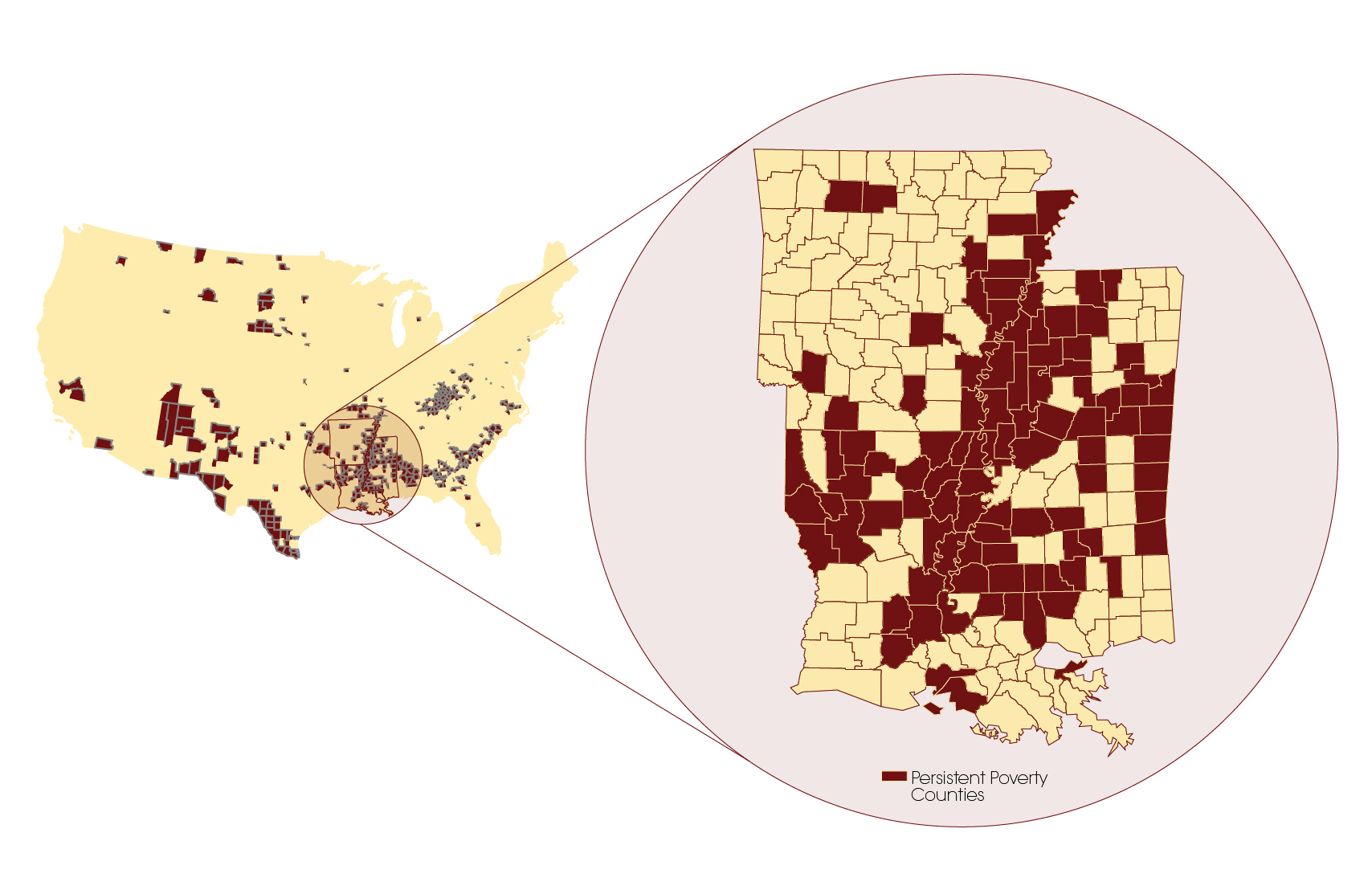Women in the Mid South Continue to Face Obstacles
March 4th, 2016
To coincide with Women’s History Month, all month the Hope Policy Institute will explore findings from a recently released report from the Institute for Women’s Policy Research entitled Status of Women in the South. This report provides a comprehensive portrait of the status of women, particularly the status of women of color, in the southern states, on six different topic areas related to women’s economic, political, health, and social status. The disparities explored in this report underscore the need for policies that create ladders of opportunity for women and families, particularly in high-poverty areas.
The Southern United States is a complex and diverse region, both in its culture and economy. However, the regional differences that exist are even more prevalent in the Mid South where concentrations of persistent poverty further limit opportunity for communities and families with regard to education, health, jobs and the ability to build assets for the future. For women and families, the implications of persistent poverty are severe.
Place Matters: Persistent Poverty in the Mid South
In the Mid South, almost half (44 percent) of all counties are in persistent poverty (persistent poverty is a poverty rate greater than 20 percent for at least 30 years). See map. More than half (51.1 percent) of the Mid South population is female, with 31.1percent of the total female Mid South population living in persistent poverty counties. Further, in Louisiana and Mississippi more than half the counties and parishes are classified as persistently impoverished. Women who live in these high-poverty areas often lack amenities that promote economic mobility, like high-quality schools, affordable child care, and access to job markets.
Mid South Persistent Poverty Counties
Status of Women in the South: Key Findings in the Mid South
The Mid South states received an average letter grade of “D-” and ranked among the worst in the South*. Below are some key findings that provide insight into this grade and the obstacles that women continue to face in the Mid South.
Employment & Earnings: In Arkansas and Mississippi women had median annual earnings of $30,000, the lowest in the nation. Women in Louisiana had the second lowest median annual earnings among the southern states, at $31,200, while Tennessee had the fifth lowest among southern states, at $34,000.
Work & Family: The southern states with the largest share of family households headed by single mothers include Mississippi (35.6 percent) and Louisiana (33.7 percent). Single mothers make up a slightly larger share of all family households with children under 18 in the South than in non-southern states (27.4 percent versus 24.0 percent).
Poverty & Opportunity: Across southern states, Arkansas (33.4 percent) and Louisiana (32.9 percent) have the largest shares of women 25 and older with only a high school diploma.
Health & Well-Being: Mississippi ranks last in the southern states and in the nation in the area of women’s health. It has the highest heart disease mortality rate for women in the South and the nation.
*In the report, southern states include Alabama, Arkansas, the District of Columbia, Florida, Georgia, Kentucky, Louisiana, Mississippi, North Carolina, South Carolina, Tennessee, Texas, Virginia, and West Virginia
The findings from the Status of Women in the South report highlighted above are just some of the challenges faced by women and families in persistent poverty that make economic mobility even more difficult. The data underscore the need to invest in underserved areas and develop opportunities that build supports to help women stay in the workforce and create better life outcomes for women in high-poverty areas.
This month Hope Policy Institute’s #PolicyMatters blog will take an in-depth look at the issues that women face as well as women’s progress in the Mid South. Like us Facebook and follow us on Twitter to stay informed!
Source:
Anderson, J., Shaw, E., Childers, C., Milli, J., & DuMonthier, A. (2016). The status of women in the South. Retrieved from http://statusofwomendata.org/app/uploads/2016/02/SWSouth2.24-for-posting-online.pdf
Status of Women in the South Blog Series
- Women in the Mid South Continue to Face Obstacles
- Employment and Earnings
- Poverty and Opportunity
- Work and Family










